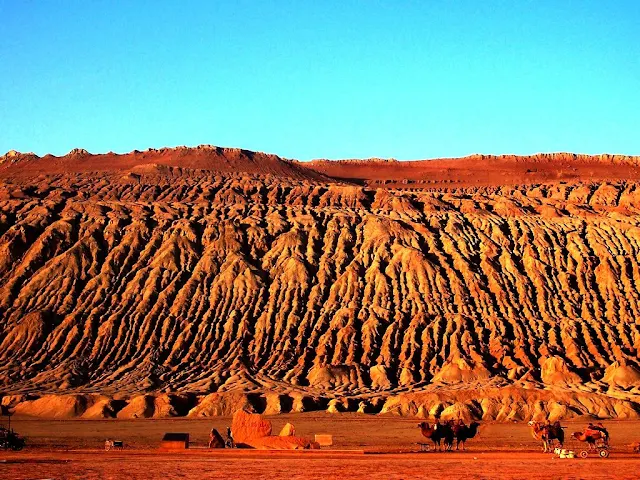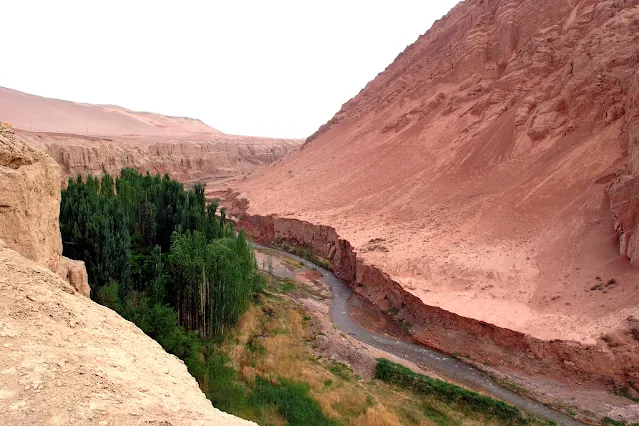Fascinating Facts About the World's Hottest Places
Interesting Facts About the Hottest Places on Earth
When you think of hot places on Earth, deserts and sun-scorched landscapes probably come to mind. But some of these locations push the boundaries of what we consider livable. From scorching sands to boiling valleys, the world’s hottest places hold some truly fascinating and bizarre facts. In this article, we’ll explore strange phenomena, record-breaking temperatures, and the unique lives of people and animals who call these sizzling places home.
1. Death Valley, USA – The Official Hottest Place on Earth
Located in California’s Mojave Desert, Death Valley holds the record for the highest air temperature ever recorded on Earth: a sweltering 134°F (56.7°C) in 1913. But the heat here goes beyond numbers.
Weird Facts About Death Valley
- Moving Rocks: Rocks in a dry lake bed called Racetrack Playa appear to move on their own, leaving mysterious trails. Scientists discovered they glide when thin ice sheets break under wind pressure.
- People Live There: Despite the name, Death Valley has a small population. Furnace Creek, a village inside the park, houses a few hundred residents who adapt to the extreme heat.
- It's Hot Even at Night: Night temperatures can remain over 100°F (37.7°C) during heat waves, making relief nearly impossible.
- Wildlife Adapts: Animals like kangaroo rats and desert bighorn sheep have evolved to survive without drinking water, relying solely on moisture from food.
2. Lut Desert, Iran – Hottest Surface Temperature Ever Recorded
While Death Valley claims the hottest air temperature, Iran’s Lut Desert holds the record for the hottest ground temperature, a mind-melting 159.3°F (70.7°C) recorded by satellite. The Lut, known locally as Dasht-e Lut, is a salt desert of bizarre terrain and surreal beauty.
Strange Desert Phenomena
- No Life Zone: Parts of the Lut Desert are so hot and dry that not even bacteria can survive, earning it the nickname "Gandom Beryan" which means “toasted wheat.”
- Salt Spiders: Despite the extreme conditions, salt-tolerant spiders and insects have been found hiding in shaded crevices and salt domes.
- Yardangs: The landscape is dotted with huge wind-carved ridges known as yardangs, which look like ancient ruins rising from the sand.
3. Dallol, Ethiopia – A Volcanic Furnace
Dallol, in Ethiopia’s Danakil Depression, is one of the most otherworldly and brutally hot inhabited places on Earth. Daily temperatures often exceed 113°F (45°C), even in winter. The area also sits below sea level, adding to the feeling of pressure and isolation.
Unique Features of Dallol
- Colorful Acid Pools: Dallol features neon-green and yellow acid pools formed by volcanic gases mixing with salt and sulfur.
- Acid Rain and Toxic Air: The air contains sulfuric gases, making breathing uncomfortable and sometimes dangerous without protection.
- Still Inhabited: The nearby Afar people have lived in this hostile environment for centuries, mining salt and guiding occasional tourists.
- Martian Landscape: NASA and European space agencies study Dallol’s geology as an analog for Mars due to its similar mineralogy and extreme conditions.
4. Flaming Mountains, China – Heat That Tells a Story
Located in the Xinjiang region, the Flaming Mountains are so named because the red sandstone ridges appear to burn under the intense sun. Summer temperatures can soar above 122°F (50°C). But beyond the heat, these mountains have deep cultural significance.
Cultural Curiosities
- Mythology: These mountains appear in the classic Chinese novel “Journey to the West,” where they’re said to have been created by a fallen spark from the Monkey King’s magical fire fan.
- Egg-Frying Temperatures: Locals claim you can fry an egg on the rocks during peak heat—though you might burn your fingers trying.
- Historical Trade Route: The area was a key part of the Silk Road, connecting China with Central Asia and the Middle East.
5. Kuwait City, Kuwait – Urban Heat at Its Peak
In 2021, Kuwait City recorded one of the highest temperatures ever measured in an urban environment: 127.7°F (53.2°C). Unlike remote deserts, this is a bustling city filled with skyscrapers, cars, and millions of people.
Modern Challenges of Urban Heat
- Air Conditioner Overload: In peak summer, so much energy is used for cooling that blackouts are a real threat.
- Burning Asphalt: Sidewalks and roads become dangerously hot, often reaching temperatures that can melt shoes or tires.
- Extreme Workplace Conditions: Outdoor workers face life-threatening heat, leading to labor law reforms that restrict work during the hottest hours.
- Infrastructure Strain: The intense heat is accelerating wear on roadways, water lines, and power grids.
6. Timbuktu, Mali – A Historical Hotspot
Famous for its ancient manuscripts and trading history, Timbuktu is also one of the hottest inhabited cities. Summer highs consistently exceed 115°F (46°C).
Heat and Heritage
- Clay Architecture: Many buildings are made from sun-dried mud, which helps regulate indoor temperatures naturally.
- Manuscript Preservation: Keeping centuries-old books safe from heat and sand requires special climate-controlled vaults and restoration efforts.
- Shifting Sands: Encroaching desert dunes threaten to bury homes and historic sites, leading to constant community efforts to push the sand back.
7. Queensland Outback, Australia – Dry and Fiery
Australia’s interior is notorious for extreme heatwaves and dryness. In some towns like Birdsville, temperatures can exceed 122°F (50°C) and stay high for days.
Unusual Survival Tactics
- Beer as Currency: In remote areas, beer has historically been used as a form of barter and payment due to isolation and heat-driven demand.
- Underground Homes: In Coober Pedy, people live in “dugouts” — houses carved into rock — to escape the brutal surface heat.
- Wildfire Threats: The extreme dryness and heat make the region highly prone to bushfires, with entire towns occasionally threatened or evacuated.
8. Sahara Desert – The Classic Furnace
The Sahara is the largest hot desert in the world, spanning multiple countries and containing vast dunes, rocky plateaus, and searing heat. Temperatures can reach up to 122°F (50°C) in summer.
Surprising Facts About the Sahara
- Snow in the Desert: Though rare, snowfall has been recorded in parts of the Sahara, especially in the Atlas Mountains region.
- Nomadic Resilience: The Tuareg and other desert peoples have lived sustainably in the Sahara for generations, relying on deep knowledge of wind, water, and animals.
- Ancient Rock Art: Cave paintings and carvings show that parts of the Sahara were once green, filled with wildlife and water sources.
9. Wadi Halfa, Sudan – Where the Wind Doesn’t Help
Wadi Halfa is located near Lake Nubia and borders Egypt. Temperatures here can regularly surpass 115°F (46°C). Unlike coastal regions, the dry wind from the desert does little to cool things down.
Hardships of a Hot Border Town
- Minimal Shade: With limited tree cover and little vegetation, shade is a precious commodity.
- Water Struggles: Despite being near a lake, potable water is a challenge due to high salinity and evaporation rates.
- Transport Reliance: The town is a major transport hub, connecting Sudan to Egypt, and heat-related train delays are common.
10. Turpan Basin, China – Hot and Below Sea Level
The Turpan Basin, located in northwest China, is one of the lowest and hottest places in the country, lying 154 meters (505 feet) below sea level. Summer temperatures here can rise above 118°F (48°C).
Desert Vines and Innovations
- Underground Irrigation: Ancient karez systems—networks of underground channels—were used to irrigate grapevines without evaporation losses.
- Flaming Heat + Farming: Despite the intense sun, Turpan is famous for its sweet raisins and melons, which are dried naturally in open-air sun shelters.
Conclusion: Life in the Heat
The hottest places on Earth are more than just numbers on a thermometer. They are filled with life, stories, and phenomena that challenge our understanding of what’s possible. From acid-filled pools in Ethiopia to moving rocks in Death Valley, these regions prove that even in the harshest conditions, the world remains a deeply fascinating place.
Whether driven by science, culture, or raw curiosity, exploring the hottest places on Earth reveals much about human adaptation, environmental extremes, and the resilience of nature. These strange and scorching spots remind us how truly diverse and unusual our planet can be. They serve as testing grounds for survival, ingenuity, and respect for nature’s power.
So next time you're sweating in the summer sun, just imagine what life is like in a place where even the ground itself can cook a meal.
@2025 Haruka Cigem - Curious Facts Explored.











Post a Comment